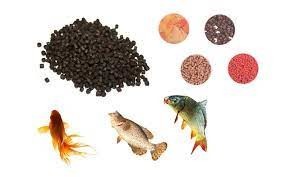التغذية والتمثيل الغذائي للمعادن في الأسماك

هدفنا هو إدخال التغذية المعدنية للأسماك وشرح مدى تعقيد تحديد متطلبات هذه العناصر، التي تمتصها الأسماك وتفرزها في المياه المحيطة. حتى الآن، تم التحقيق في متطلبات تسعة معادن فقط. تركز المراجعة على الامتصاص والعوامل الغذائية التي تقلل من امتصاصها من مكونات العلف من أصل نباتي وحيواني. تم ربط بعض الأمراض ، مثل إعتام عدسة العين وفقر الدم وتشوه العظام ، بنقص المعادن في النظام الغذائي.
الخلاصة: تمتلك الحيوانات المائية آليات فسيولوجية فريدة من نوعها لامتصاص المعادن والاحتفاظ بها من غذائها ومياهها. كان البحث والتطوير في مجال التغذية المعدنية للأسماك المستزرعة والقشريات بطيئًا نسبيًا وتوجد فجوات كبيرة في معرفة متطلبات العناصر النزرة والوظائف الفسيولوجية والتوافر البيولوجي من مكونات العلف. تم الإبلاغ عن المتطلبات الغذائية الكمية لثلاثة عناصر كبيرة (الكالسيوم والفوسفور والمغنيسيوم) وستة معادن أثرية (الزنك والحديد والنحاس والمنغنيز واليود والسيلينيوم) لأنواع أسماك مختارة. تشمل علامات نقص المعادن في الأسماك انخفاض تمعدن العظام ، وفقدان الشهية ، وإعتام عدسة العين (الزنك) ، وتشوهات الهيكل العظمي (الفوسفور ، والمغنيسيوم ، والزنك) ، وتآكل الزعانف (النحاس ، والزنك) ، والتكلس الكلوي (نقص المغنيسيوم ، وتسمم السيلينيوم) ، وتضخم الغدة الدرقية (اليود)، الحثل العضلي (سيلينيوم) وفقر الدم الناقص الصغر (الحديد). يؤدي الإفراط في تناول المعادن من النظام الغذائي أو امتصاص الخياشيم إلى حدوث تسمم ، وبالتالي فإن التوازن الدقيق بين نقص المعادن والسمية أمر حيوي للكائنات المائية للحفاظ على توازنها ، إما من خلال زيادة الامتصاص أو الإخراج. يمكن أن يؤدي إطلاق المعادن من الأعلاف غير المأكولة أو غير المهضومة ومن إفراز البول إلى زيادة المغذيات في المياه الطبيعية ، الأمر الذي يتطلب مزيدًا من الاهتمام في تركيبة الأعلاف. يتم استعراض المعرفة الحالية في التغذية المعدنية للأسماك بإيجاز.
=====.
Nutrition and Metabolism of Minerals in Fish
Our aim is to introduce the mineral nutrition of fish and explain the complexity of determining requirements for these elements, which are absorbed and excreted by the fish into the surrounding water. To date, only the requirements for nine minerals have been investigated. The review is focused on the absorption and the dietary factors that reduce their absorption from feed ingredients of plant and animal origin. Some diseases, such as cataracts, anemia and bone deformity, have been linked to dietary deficiency of minerals. Abstract: Aquatic animals have unique physiological mechanisms to absorb and retain minerals from their diets and water. Research and development in the area of mineral nutrition of farmed fish and crustaceans have been relatively slow and major gaps exist in the knowledge of trace element requirements, physiological functions and bioavailability from feed ingredients. Quantitative dietary requirements have been reported for three macroelements (calcium, phosphorus and magnesium) and six trace minerals (zinc, iron, copper, manganese, iodine and selenium) for selected fish species. Mineral deficiency signs in fish include reduced bone mineralization, anorexia, lens cataracts (zinc), skeletal deformities (phosphorus, magnesium, zinc), fin erosion (copper, zinc), nephrocalcinosis (magnesium deficiency, selenium toxicity), thyroid hyperplasia (iodine), muscular dystrophy (sele-nium) and hypochromic microcytic anemia (iron). An excessive intake of minerals from either diet or gill uptake causes toxicity and therefore a fine balance between mineral deficiency and toxicity is vital for aquatic organisms to maintain their homeostasis, either through increased absorption or excretion. Release of minerals from uneaten or undigested feed and from urinary excretion can cause eutrophication of natural waters, which requires additional consideration in feed formulation. The current knowledge in mineral nutrition of fish is briefly reviewed.
<!--https://www.researchgate.net/publication/354633038_Nutrition_and_Metabolism_of_Minerals_in_Fish
<!--September 2021, Animals 11(9)
<!--DOI: 10.3390/ani11092711
<!--License: CC BY 4.0
<!--Santosh P Lall and Sadasivam Kaushik
Santosh and Sadasivam, 2021. Nutrition and Metabolism of Minerals in Fish; September 2021, Animals 11(9).
=========.
=========.
========.
https://elhaisha.blogspot.com/2022/06/nutrition-and-metabolism-o.html
=======.



ساحة النقاش